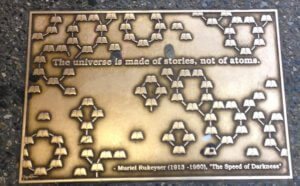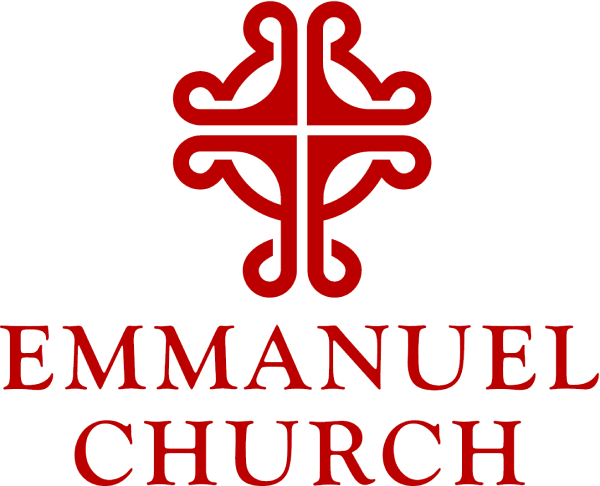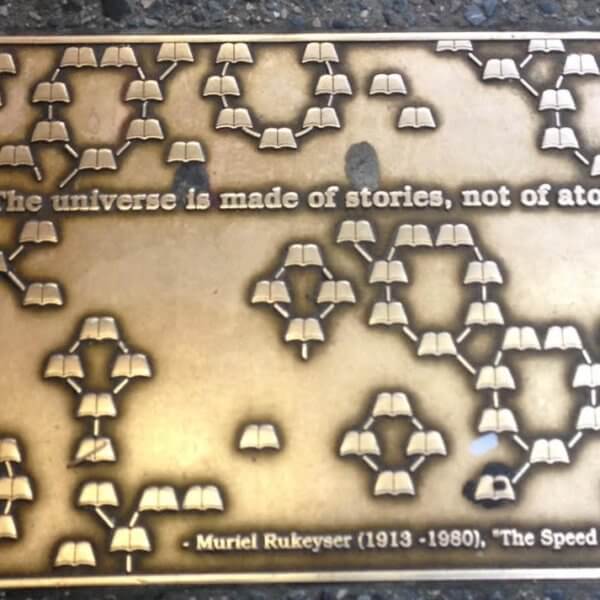
Reconnecting With Our Story
 Happy Independence Day to all of you! I hope you have all found ways to stop and reflect on this time in the life of our nation this weekend. Independence Day looks different during a pandemic, doesn’t it? I know that some of you have been able to reconnect — masked and physically distanced, of course — with your family and friends. And while there are a few public events that have gone forward — fireworks, mostly, not many parades — many events have been cancelled or postponed until a safer time in our pandemic trajectory.
Happy Independence Day to all of you! I hope you have all found ways to stop and reflect on this time in the life of our nation this weekend. Independence Day looks different during a pandemic, doesn’t it? I know that some of you have been able to reconnect — masked and physically distanced, of course — with your family and friends. And while there are a few public events that have gone forward — fireworks, mostly, not many parades — many events have been cancelled or postponed until a safer time in our pandemic trajectory.
Jere and I celebrated Independence Day by watching a movie at home — BUT not just any movie. I have wanted to see Hamilton, the Broadway musical — about the lives, the work, and the relationships of Alexander Hamilton and other founding fathers of our nation — ever since it first hit Broadway in 2015. I’ve listened to the soundtrack probably hundreds of times, but we’ve never been able to see it in person. So it was a great surprise and absolute delight to learn a couple of months into COVIDtide that the Disney Channel would stream Hamilton, beginning this last Friday night, just in time for Independence Day. There are so very many things to say about this incredible rap musical written and created by Lin-Manuel Miranda — who also plays Alexander Hamilton. Most of the actors are Black, Latinx, or Asian, even though history tells us that George Washington, Thomas Jefferson, and Aaron Burr, for example, were actually white, and even slave owners. And of course rap music — using a 21st century street vocabulary — was not a common musical idiom at the time of the American Revolution.
Creative Liberties
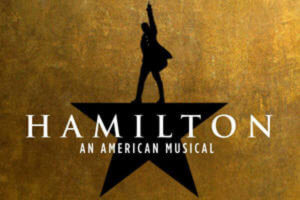 The language and the music are not historically accurate of course. They are creative liberties. But they communicate a message that we might not be able to hear or see if the very same story was told in the common vocabulary of the American colonies in 1776 — like people would have spoken in New York City then — or in Washington Square, right here in Newport. And maybe with a harpsichord, instead of a beat box. These familiar idioms of our own time somehow make the human tensions of the eve of the American Revolution more relatable. We can understand these historical figures — the founding leaders of our country — as people and feel a connection to them through their stories. With Hamilton’s translation of the founding of our nation into the familiar idiom of our own time, we can feel and see what’s really at stake, who’s on which side, and why it matters so much. We connect with our shared history by finally really feeling and understanding the human stories behind the names, dates, facts, and places. We pick up more than just the historical details — we get the meaning.
The language and the music are not historically accurate of course. They are creative liberties. But they communicate a message that we might not be able to hear or see if the very same story was told in the common vocabulary of the American colonies in 1776 — like people would have spoken in New York City then — or in Washington Square, right here in Newport. And maybe with a harpsichord, instead of a beat box. These familiar idioms of our own time somehow make the human tensions of the eve of the American Revolution more relatable. We can understand these historical figures — the founding leaders of our country — as people and feel a connection to them through their stories. With Hamilton’s translation of the founding of our nation into the familiar idiom of our own time, we can feel and see what’s really at stake, who’s on which side, and why it matters so much. We connect with our shared history by finally really feeling and understanding the human stories behind the names, dates, facts, and places. We pick up more than just the historical details — we get the meaning.
We know that Broadway is not the place to learn the specific dates and actual factual details of the American Revolution — any more than the Bible is the place to learn the history of the Ancient Near East. We will only be frustrated and disappointed if we try to reconcile — for example — the facts and dates of the two different creation stories in Genesis, or how Jesus managed to ride down the Mount of Olives riding both a donkey and the donkey’s colt, as Matthew’s gospel describes. What we’re getting at here is meaning — NOT historicity. How do we all participate and share in that meaning, and how does that meaning connect us to each other? Where we learn from scripture — and from Broadway for that matter — is when we connect to a story and the people in it and ask ourselves NOT did it actually happen on that certain day in exactly the way that’s described here, BUT what does this story tell us about our lives as human beings, and how can we live and flourish together in community?
Our Stories Reconnect Us
Broadway and the Bible — in different ways and at different times — are both places where we find and share meaning. Poet Muriel Rukeyser wrote that the world is made of stories, not atoms. And in a very real sense, that’s true. Our stories reconnect us — to each other, to our past, and to our future. Our stories are not always made up of actual facts, but they are the most real thing about us — the part that makes us human.
We have become more aware over these past months that not all of us experience our society and our nation’s history in the same way. Monuments are erected by the victors in a struggle — whether that struggle is the American Revolution, the Civil War, or the conquest of Jerusalem by the Ottoman Empire. Monuments that represent hope and freedom to those who set them up can just as strongly represent oppression, exclusion, and pain to those whose story was on the other side of the struggle. We’ve heard these different stories and feelings — all true at the same time — as protesters have defaced and demanded the removal of monuments in DC, New York, South Carolina, Oregon, Virginia, Georgia, and Florida — just to name just a few. There is so much more we need to understand of the story that those monuments tells to those Americans who feel hurt and excluded by them. Not just the facts, but the meaning — how they feel.
Great Migration
I’ve been reading Isabel Wilkerson’s new book, The Warmth of Other Suns, about the Great Migration — the exodus of 6 million African Americans in the 1950s and 1960s from share cropping in the South to factory work in Northern cities. This is a story I really didn’t know much about, but Wilkerson makes it all real and human by showing me how I connect to the story in our time. Wilkerson names Michelle Obama, James Baldwin, Diana Ross, John Coltrane, Jimmie Hendrix, Toni Morrison, Stevie Wonder, and Denzel Washington — among many others. Each of these well-known people has had different but significant effects on shaping our culture. Naming them makes us realize that the Great Migration connects us all through our stories, just like the Broadway musical Hamilton translates the experience of our nation’s founders so that we can connect to their human story in our time. Wilkerson connects all of us to the experience of those in the Great Migration — opera singers, poets, musicians, and university professors — whose creativity and genius would be lost to the country if they or their parents had not joined the Great Migration.
Wilkerson writes the human story of the Great Migration in terms of immigration — of leaving the Old Country of the plantations for the New World. That immigrant perspective is particularly meaningful as we mark Independence Day this year, in the midst of our intertwined pandemics of COVID19 and systemic racism. Understanding the story of the Great Migration in the context of the 19th and 20th-century European immigrant experience connects us in our gut to the story we like to tell — particularly on Independence Day — of our nation’s radical inclusion. It’s a shared story. And it’s a gospel story.
You Will Find Rest for Your Souls
Jesus says in the reading from Matthew’s gospel today, Come to me, all you that are weary and are carrying heavy burdens, and I will give you rest. Take my yoke upon you, and learn from me; for I am gentle and humble in heart, and you will find rest for your souls. For my yoke is easy, and my burden is light. We hear that gospel’s resonance in Emma Lazarus’s familiar poem inscribed on a plaque in the Statue of Liberty —
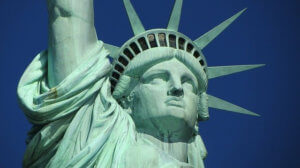 Give me your tired, your poor,
Give me your tired, your poor,
Your huddled masses
yearning to breathe free.
The Statue of Liberty was actually originally meant to celebrate the abolition of slavery. But its close proximity to Ellis Island — and then Lazarus’s poem — shaped a new story and made it a symbol of the immigrant tradition. Stories connect us and help us to understand our shared history in new ways.
In its Zoom meeting Thursday evening, Emmanuel’s vestry approved our Reopening Plan. We’re beginning the process of getting back to in-person worship — outdoors, at first, where it’s safer for all of us.
Our first step in this process is to reconnect with our Emmanuel community.
We’ll get together on the church lawn in groups of 3-4 at a time to reconnect with each other and share our stories and experiences of these months apart. What’s our story of our time in isolation? How are our stories alike? What experiences or feelings have we had in our separation? How have those experiences or feelings changed us? How will we tell our new story together as Emmanuel Church?
Our stories connect us — to each other, to our past, and to our future. Our stories are not always — or even very often — made up of actual facts, but they are bursting with meaning — the very part that makes us human and forms us as a people in Christ. Amen
